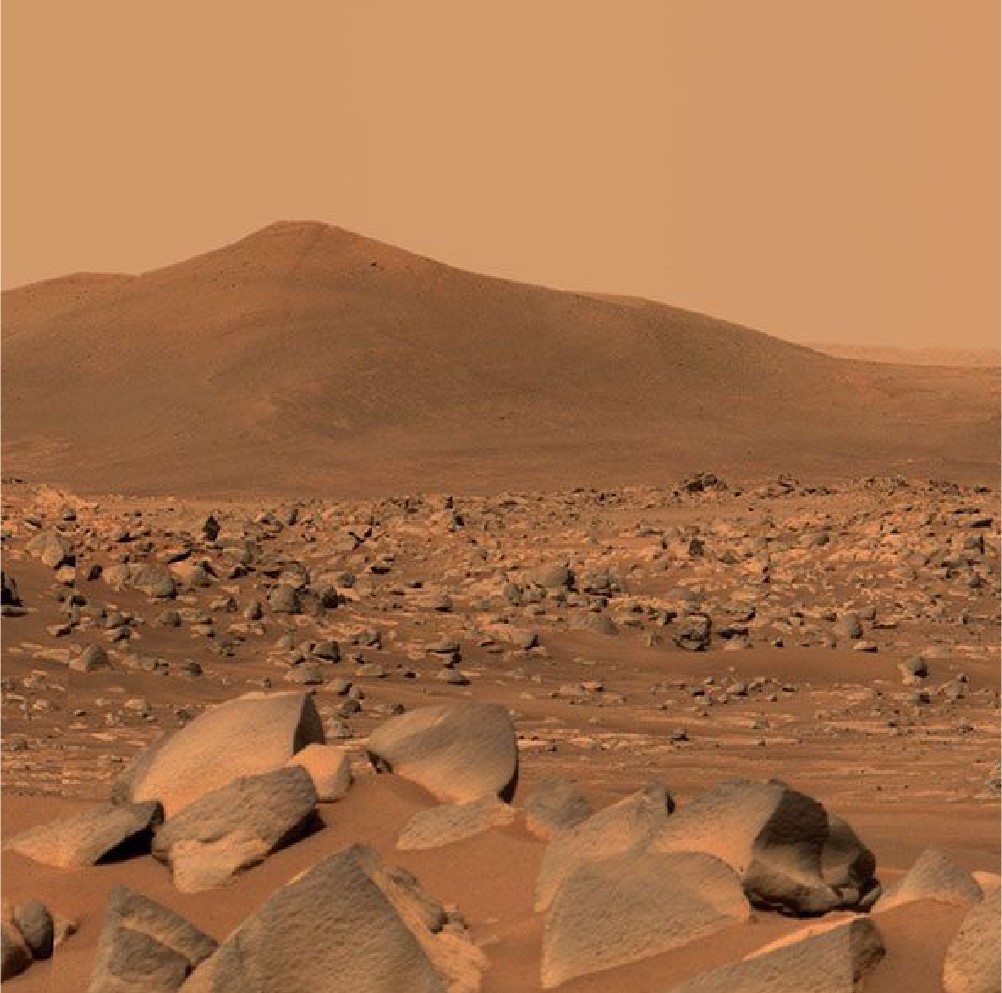About Mars
Mars is often called the "Red Planet" because of its reddish appearance. This color comes from iron oxide, or rust, covering its surface. Mars has about half the diameter of Earth and a much thinner atmosphere. Its composition is primarily rocky, with some polar ice caps made of water and carbon dioxide.
Mars has a thin atmosphere composed mostly of carbon dioxide (CO2), with traces of nitrogen and argon. The atmosphere is much less dense than Earth's and cannot support human life without significant technological assistance.





